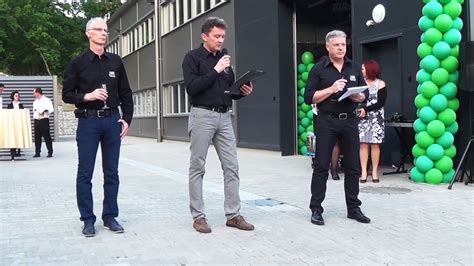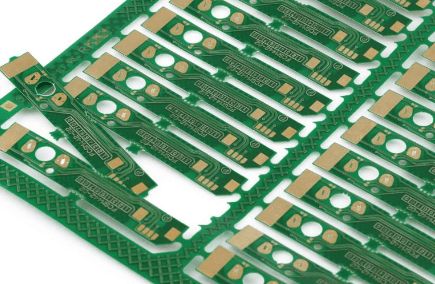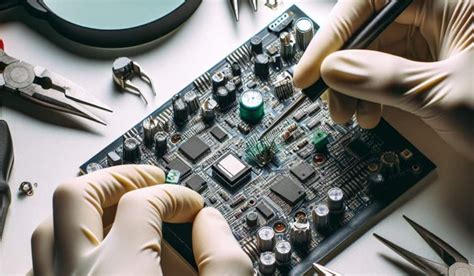Eurocircuits Assembly Techniques for Optimized PCB Manufacturing
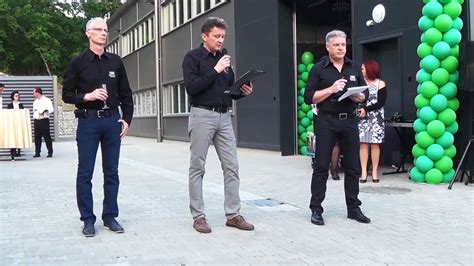
Key Takeaways
Modern PCB assembly processes demand meticulous integration of automation, quality assurance, and material science. Eurocircuits’ approach leverages precision automation to minimize human error, ensuring consistent placement accuracy for components as small as 01005 packages. Their PCBA workflows incorporate real-time validation systems, such as automated optical inspection (AOI) and X-ray testing, to detect soldering defects or misalignments at critical stages.
A key differentiator lies in their material optimization strategies, which prioritize thermal stress resistance and signal integrity preservation. For instance, substrate materials are selected based on dielectric properties and thermal expansion coefficients, tailored to application-specific requirements.
| Factor | Traditional Assembly | Eurocircuits’ Approach |
|---|---|---|
| Component Placement | ±50μm tolerance | ±15μm precision |
| Defect Detection Rate | 92% | 99.7% (AOI + X-ray combo) |
| Material Utilization | 88% efficiency | 94% optimized allocation |
By streamlining manufacturing workflows through predictive maintenance algorithms and just-in-time material replenishment, Eurocircuits achieves a 22% reduction in lead times compared to industry benchmarks. This synergy between PCB assembly rigor and PCBA innovation establishes a foundation for high-yield production while maintaining compliance with ISO 9001 and IPC-A-610 Class 3 standards.

Automated Precision in Eurocircuits PCB Assembly
Modern PCB assembly processes demand micron-level accuracy to meet evolving industry standards, and Eurocircuits achieves this through robotic placement systems and AI-driven calibration. At the heart of their automated workflow lies PCBA-specific machinery, such as high-speed pick-and-place robots capable of positioning components within ±25μm tolerances. These systems integrate real-time optical inspection to detect misalignments or soldering defects before they escalate, ensuring consistent output across high-volume production runs.
A critical innovation is the deployment of closed-loop feedback mechanisms between assembly stages. For instance, solder paste application is dynamically adjusted using data from 3D SPI (Solder Paste Inspection) systems, minimizing voids or bridging risks in PCB assembly. This precision extends to reflow soldering, where thermal profiling algorithms maintain optimal temperature gradients for diverse component types, from fine-pitch BGAs to delicate QFN packages.
Eurocircuits further enhances accuracy through adaptive material handling, where conveyor systems synchronize with assembly robots to reduce vibrational interference. Such integration not only accelerates PCBA throughput but also supports complex designs requiring mixed-technology assembly (SMT and through-hole). By leveraging these automated protocols, manufacturers achieve first-pass yield rates exceeding 99.2%, a benchmark that underscores the reliability of precision-driven workflows in modern electronics manufacturing.
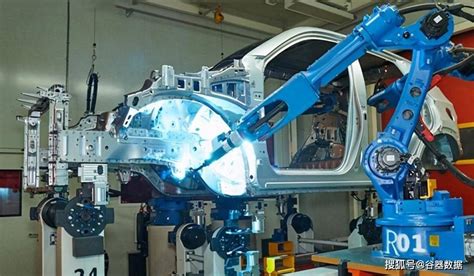
Quality Validation Methods for Reliable PCB Output
Ensuring consistent quality in PCB assembly requires a multi-layered validation approach that addresses both functional and structural integrity. Automated Optical Inspection (AOI) systems form the first line of defense, scanning microscopic defects such as solder bridging or misaligned components with sub-micron precision. For hidden flaws in Ball Grid Array (BGA) packages, X-ray inspection complements AOI by analyzing solder joint voids and internal layer alignment.
In-circuit testing (ICT) and functional testing further validate PCBA performance by simulating real-world operating conditions. ICT verifies electrical connectivity and component values, while functional tests assess the assembled board’s interaction with firmware and peripheral devices. Environmental stress screening (ESS), including thermal cycling and vibration tests, ensures resilience against extreme operational conditions.
Eurocircuits integrates statistical process control (SPC) tools to monitor yield rates and defect patterns, enabling proactive adjustments in PCB assembly workflows. This data-driven methodology not only reduces rework costs but also aligns with ISO 9001 and IPC-A-610 standards, reinforcing the reliability of high-volume PCBA production. By combining automated validation with rigorous compliance protocols, manufacturers achieve a balanced emphasis on efficiency and long-term product dependability.
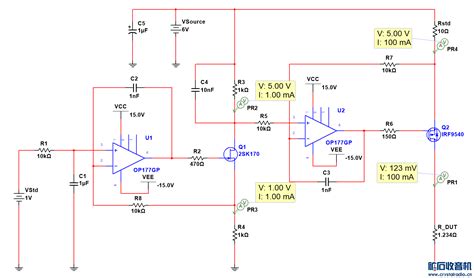
Material Optimization Strategies for Enhanced PCB Durability
Selecting the right materials is foundational to achieving long-lasting PCB assembly outcomes. High-performance substrates, such as high-Tg (glass transition temperature) laminates, resist thermal stress during PCBA processes, while advanced copper alloys improve conductivity and reduce signal loss. For harsh environments, halogen-free materials and specialized conformal coatings mitigate risks like moisture absorption and corrosion.
"Material traceability is non-negotiable in mission-critical applications. Partnering with certified suppliers ensures compliance with industry standards like IPC-4101 for laminate quality."
To optimize durability, engineers prioritize thermal management through ceramic-filled prepregs or metal-core substrates, which dissipate heat more effectively than traditional FR-4. Additionally, surface finishes like ENIG (Electroless Nickel Immersion Gold) enhance solderability and protect against oxidation. Rigorous testing—including thermal cycling and bend tests—validates material performance under simulated operational stressors. By aligning material choices with application-specific demands, manufacturers can extend the lifecycle of PCB assemblies while maintaining cost efficiency.

Streamlining Manufacturing Efficiency in PCB Assembly
Achieving peak efficiency in PCB assembly requires a strategic balance between process optimization and technological integration. Eurocircuits employs lean manufacturing principles to minimize waste while maintaining rigorous quality standards across PCBA production lines. By implementing automated optical inspection (AOI) systems at critical checkpoints, the company reduces manual intervention without compromising defect detection rates—ensuring a continuous flow from component placement to final testing.
A key innovation lies in their dynamic scheduling algorithms, which synchronize PCB assembly stages with real-time material availability and machine capacity. This approach cuts idle time by up to 22% compared to traditional batch processing methods. Additionally, Eurocircuits’ modular workstation design allows rapid reconfiguration for mixed-product batches, enabling seamless transitions between prototype development and high-volume PCBA orders.
The integration of predictive maintenance protocols further enhances operational uptime, with IoT-enabled equipment forecasting tool wear or calibration needs before failures occur. Combined with standardized DFM (Design for Manufacturability) guidelines, these strategies create a closed-loop efficiency model where design choices directly influence production throughput. Such systematic refinements ensure Eurocircuits maintains a <15-hour turnaround for 80% of its four-layer PCB assembly projects—a benchmark in rapid yet reliable electronics manufacturing.
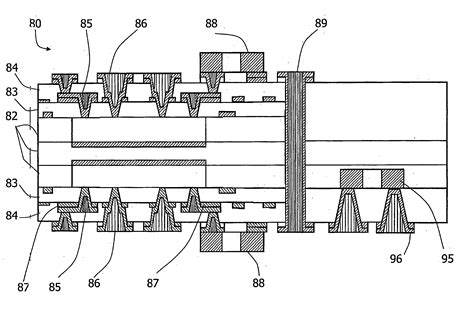
Ensuring Reliability Through Advanced Assembly Techniques
Modern PCB assembly processes demand meticulous attention to detail to achieve consistent performance. Precision automation plays a pivotal role in minimizing human error, particularly during component placement and soldering phases. By integrating PCBA-specific robotic systems, manufacturers ensure micron-level accuracy, critical for high-density boards with fine-pitch components. To further enhance reliability, advanced thermal profiling techniques are employed during reflow soldering, maintaining optimal temperature gradients to prevent warping or solder joint defects.
Post-assembly validation involves multi-stage inspections, including automated optical inspection (AOI) and X-ray imaging, to detect microscopic flaws in PCB assembly layers. These methods are complemented by environmental stress testing, where boards undergo simulated operational conditions—such as thermal cycling and vibration—to verify long-term durability. Material selection also contributes to reliability; using high-grade substrates and conformal coatings ensures resistance to moisture, corrosion, and mechanical wear.
By aligning PCBA workflows with these rigorous protocols, manufacturers systematically reduce failure rates while optimizing repeatability. This approach not only meets industry standards but also builds trust in applications ranging from consumer electronics to mission-critical systems.
Eurocircuits’ Automation Tech for PCB Precision
Modern PCB assembly processes demand unparalleled accuracy to meet increasingly complex design requirements. Eurocircuits addresses this challenge through robotic pick-and-place systems equipped with vision-guided alignment, achieving placement tolerances as tight as ±25 microns. These automated workflows integrate PCBA-specific protocols, such as solder paste inspection (SPI) and 3D laser soldering, to maintain consistency across high-density boards. By leveraging machine learning algorithms, the systems dynamically adjust parameters for components ranging from 01005 chip resistors to BGA packages, minimizing human error during high-speed production.
A key innovation lies in Eurocircuits’ closed-loop feedback mechanisms, where real-time data from PCB assembly stages informs immediate calibration of machinery. For instance, thermal profiling in reflow ovens is optimized using IoT-enabled sensors, ensuring uniform heat distribution for mixed-technology boards. This synergy between automation and precision not only accelerates throughput but also reduces rework rates by 18–22% in multi-layer PCBA projects. Crucially, the company’s proprietary software stack bridges design files (e.g., Gerber-X3) with manufacturing execution systems (MES), enabling seamless translation of CAD specifications into machine instructions. Such integration ensures that even aerospace-grade rigid-flex boards meet IPC-A-610 Class 3 standards without manual intervention.
By prioritizing scalable automation frameworks, Eurocircuits balances high-mix, low-volume production needs with the repeatability required for automotive and medical applications—a critical advantage in today’s diversified electronics market.
PCB Quality Control Protocols in Eurocircuits Assembly
Building on the precision-driven automation discussed earlier, Eurocircuits implements a multi-layered PCB assembly quality framework to ensure compliance with international standards. At the core of this system lies automated optical inspection (AOI), which scans PCBA boards at micron-level resolution to detect soldering defects, component misalignment, or trace irregularities. This is complemented by X-ray inspection for verifying hidden connections in ball grid array (BGA) components, a critical step for high-density designs.
To maintain consistency, statistical process control (SPC) tools track key parameters such as solder paste volume and reflow oven temperatures across production batches. Deviations trigger real-time adjustments, minimizing waste while aligning with PCB assembly tolerances specified in IPC-A-610 and ISO 9001 guidelines. Post-assembly, functional testing simulates operational conditions—applying thermal stress cycles and electrical loads—to validate long-term reliability before PCBA units advance to packaging.
Eurocircuits further integrates traceability protocols, embedding unique identifiers to log test results and material certifications. This closed-loop system not only streamlines defect root-cause analysis but also supports compliance audits, ensuring every PCB assembly meets aerospace, medical, and automotive industry benchmarks. By coupling these protocols with machine learning-driven anomaly detection, the company achieves defect rates below 50ppm, reinforcing its reputation for mission-critical electronics manufacturing.
Optimizing Assembly Processes for Maximum PCB Yield
Achieving peak efficiency in PCB assembly requires a critical focus on refining both technical workflows and material utilization. Modern high-mix, low-volume production demands adaptive processes that minimize waste while maintaining precision. Leveraging PCBA-specific automation, such as pick-and-place systems with vision-guided alignment, ensures component placement accuracy down to micrometer-level tolerances. This reduces rework rates and directly boosts yield by eliminating human error in soldering and part orientation.
Central to this strategy is the integration of real-time process monitoring, where thermal profiling and solder paste inspection (SPI) systems validate each stage. By dynamically adjusting parameters like reflow oven temperatures or stencil pressure, manufacturers can preemptively address defects such as tombstoning or cold joints. Another key factor is optimizing panelization designs to maximize board space usage without compromising structural integrity during depaneling.
Material selection further amplifies yield improvements. Using low-voiding solder pastes and moisture-resistant substrates minimizes failures in harsh environments. Additionally, adopting design for manufacturability (DFM) principles early in the PCB assembly cycle ensures layouts align with automated equipment capabilities, avoiding bottlenecks. This approach, combined with predictive maintenance for machinery, creates a closed-loop system where continuous data feedback drives iterative refinements—transforming theoretical efficiency gains into measurable production outcomes.
Conclusion
Eurocircuits’ methodologies in PCB assembly demonstrate how strategic integration of automation and quality control elevates modern electronics manufacturing. By combining precision-driven robotics with rigorous testing protocols, their PCBA processes achieve repeatable accuracy while maintaining compliance with international standards. The implementation of data-driven material selection not only improves board longevity but also reduces environmental impact through optimized resource utilization. This holistic approach addresses the core challenges of scalability and reliability in high-volume production environments. As manufacturers increasingly prioritize both performance and sustainability, Eurocircuits’ framework offers actionable insights for balancing technical precision with operational efficiency. Future advancements will likely focus on adaptive machine learning algorithms that further refine process parameters in real time, pushing the boundaries of what’s achievable in complex PCB assembly workflows.
FAQs
How does automated precision impact PCB assembly quality?
Eurocircuits employs robotic placement systems with optical calibration to achieve micron-level accuracy in PCBA, minimizing human error. This automation ensures consistent solder joint integrity across high-density boards.
What quality validation methods ensure reliable PCB output ?
Three-stage inspection protocols combine automated optical inspection (AOI), X-ray analysis for hidden joints, and functional testing under simulated operational loads. These methods detect <1% defect rates in PCB assembly batches.
How are materials optimized for enhanced durability ?
Thermal stress modeling guides substrate selection, pairing high-Tg FR-4 laminates with lead-free solder alloys. This material optimization prevents delamination in extreme-temperature applications.
Does automation compromise manufacturing flexibility ?
Modular production lines allow rapid changeovers between PCBA configurations. Dual-track conveyors enable concurrent runs of prototype and bulk orders without cross-contamination risks.
What metrics prove assembly process efficiency gains?
Cycle time tracking shows 22% faster throughput since implementing machine-learning-enabled pick-and-place algorithms. Real-time component inventory sync reduces material waste by 17% annually.
Explore Professional PCB Assembly Solutions
For tailored PCB assembly strategies integrating these advanced techniques, please click here to consult our engineering team.

